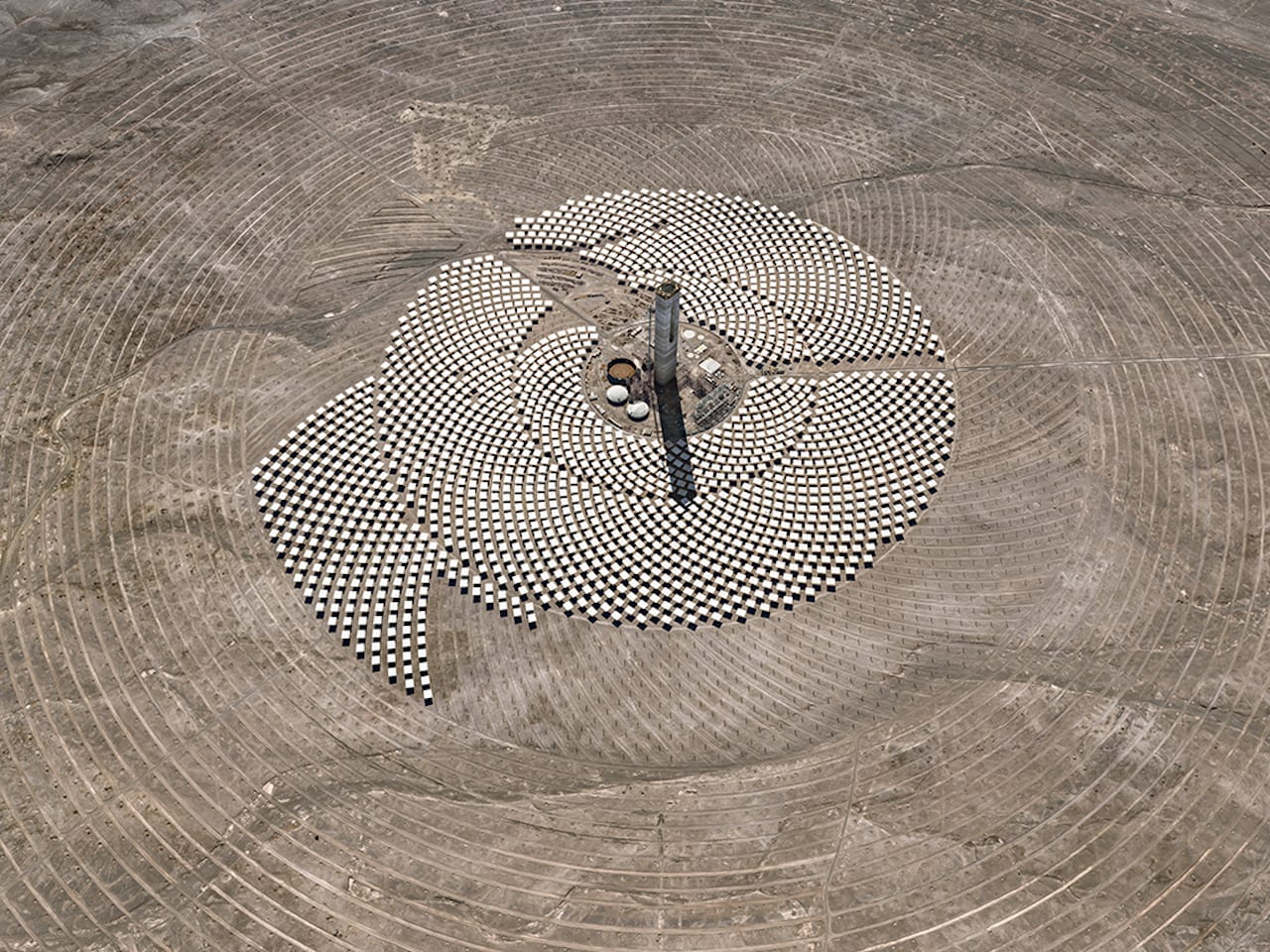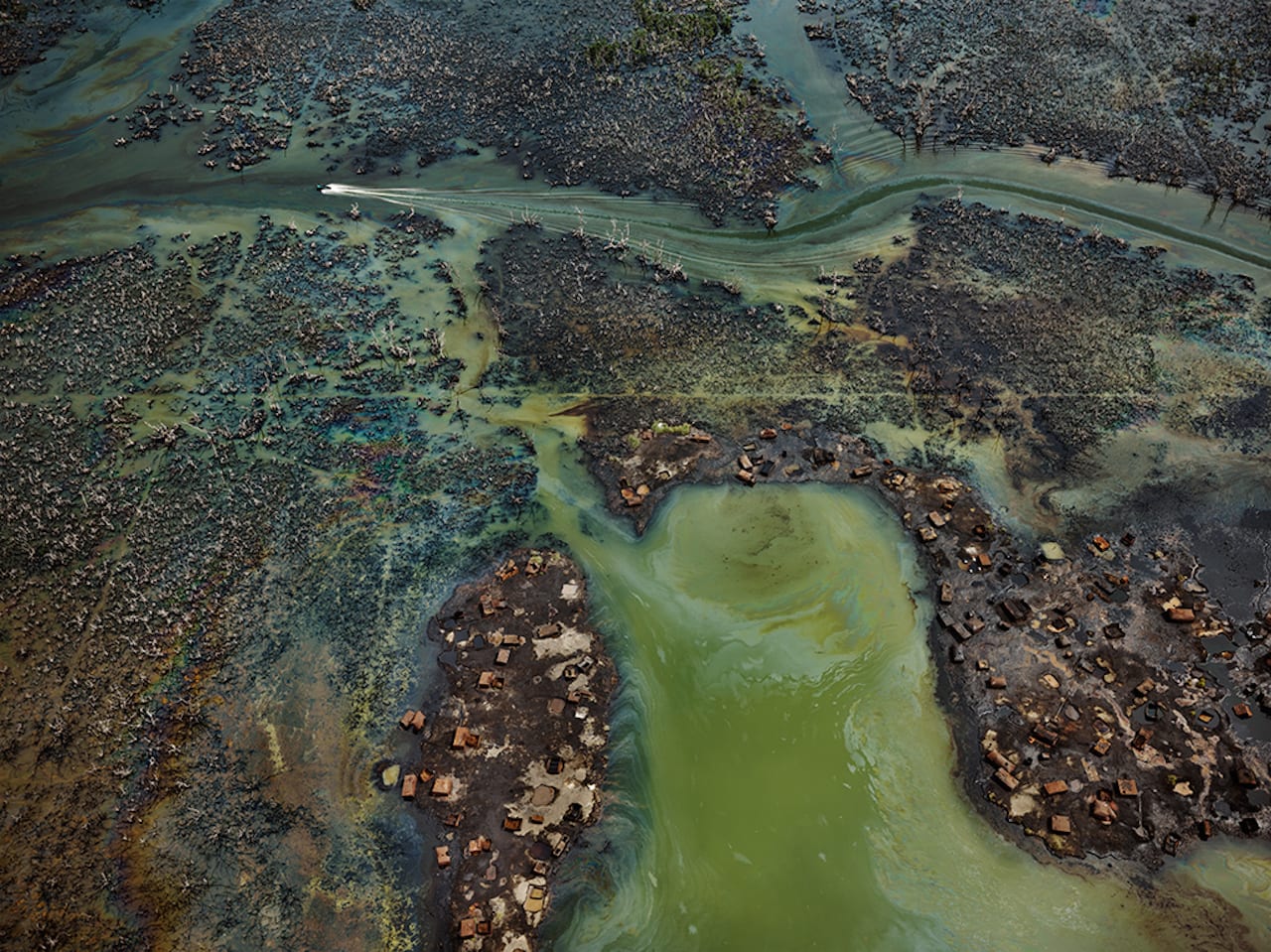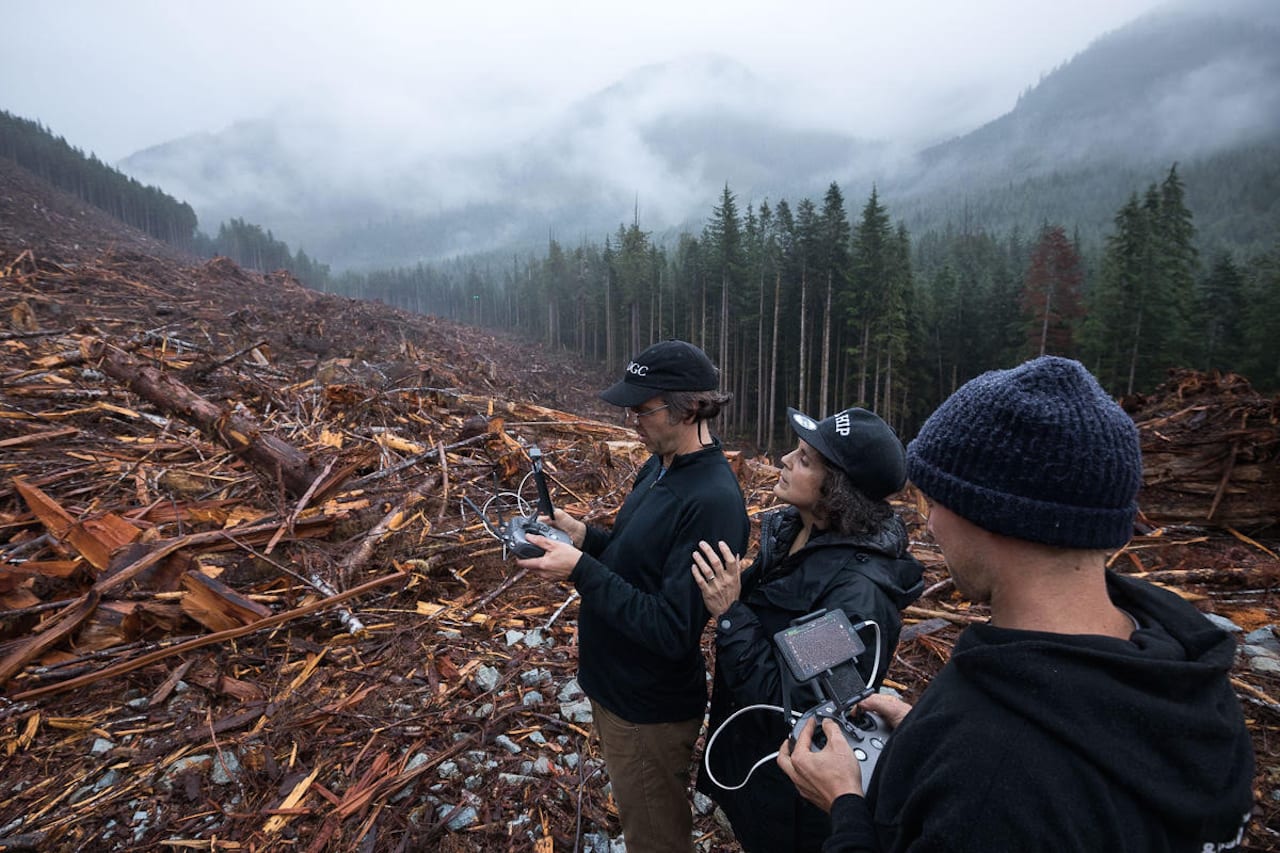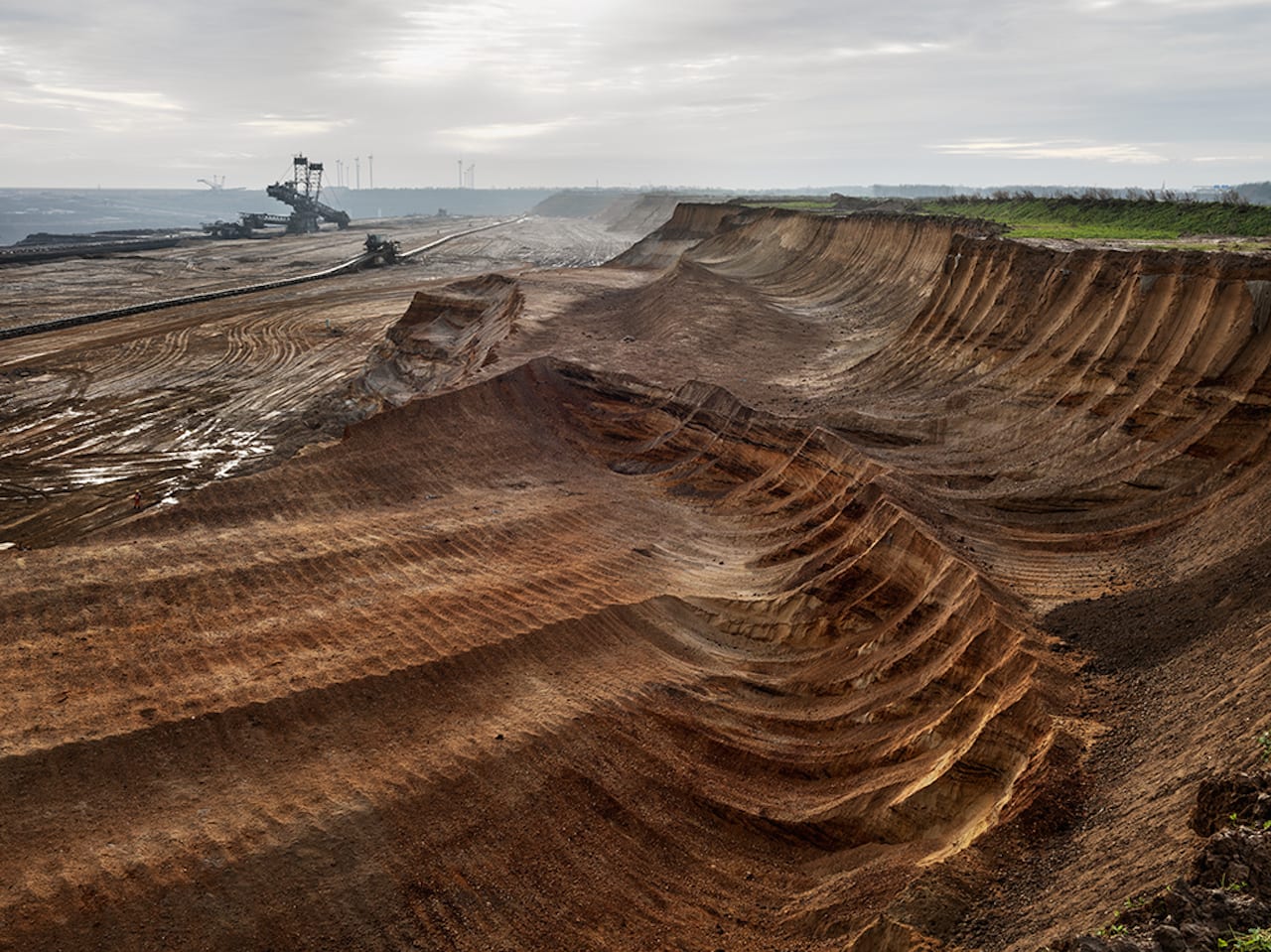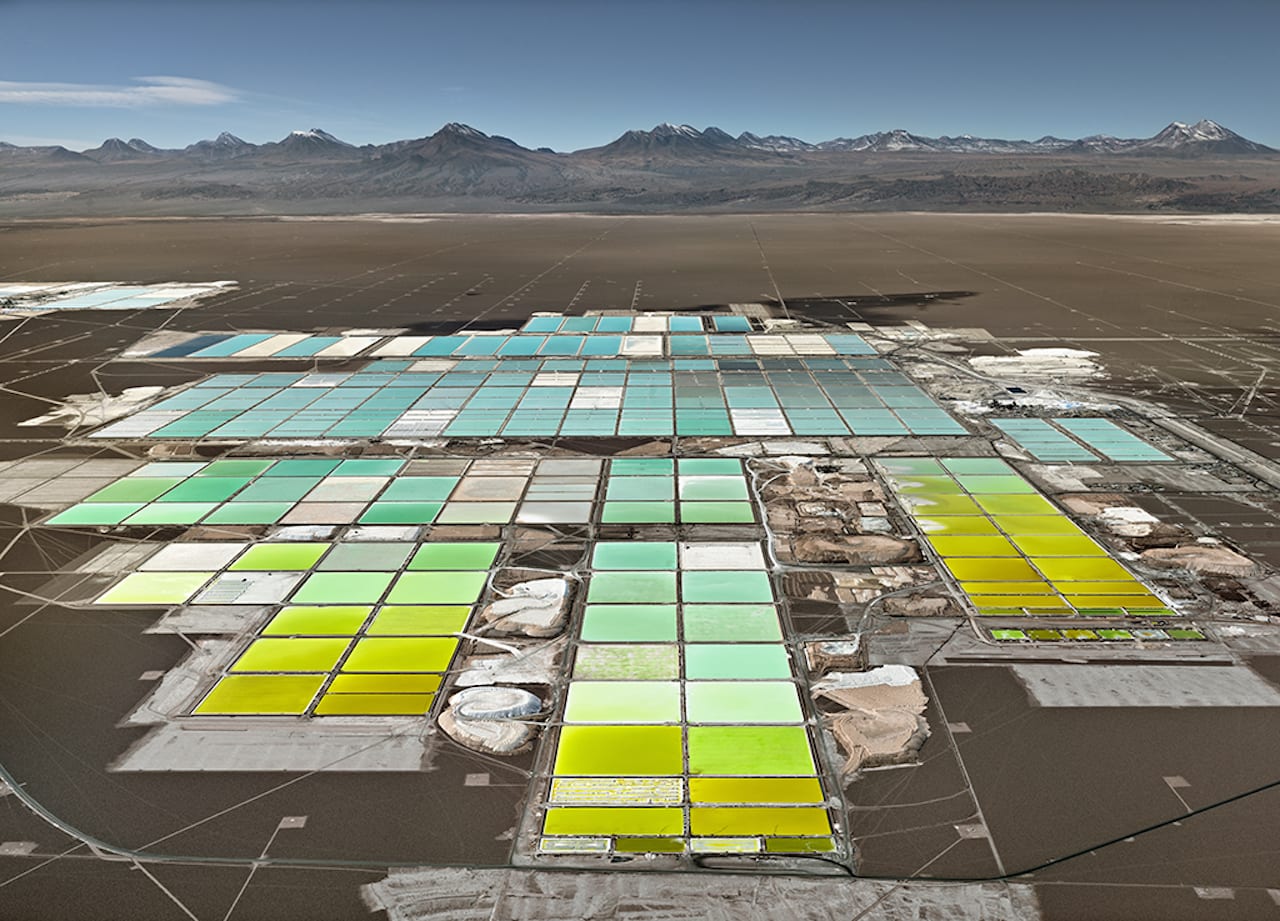“Most people would walk by a dump pile and assume that there’s no picture there,” says global industrial landscape photographer Edward Burtynsky. “But there’s always a picture, you just have to go in there and find it.” Born in Canada in 1955, Burtynsky has been investigating human-altered landscapes in his artistic practice for over 35 years, capturing the sweeping views of nature altered by industry; from stone, to minerals, oil, transportation, and silicon. “Of course, it’s important to me to make sure that my pictures are attractive to the eye,” he says. “But beneath the surface there’s always a bigger, deeper environmental issue.”
His latest exhibition, The Anthropocene Project, is directly influenced by the proposed new geologic era ‘Anthropocene’ – introduced in 2000 by chemist and Nobel Prize winner Paul Jozef Crutzen, to represent a formal recognition and acknowledgement of the “human signature” on the planet. Experts argue that the end of the current epoch has been marked by striking acceleration since the mid-20th century of carbon dioxide emissions and rising sea levels, the mass extinction of global species, and the transformation of land by deforestation and development. Burtynsky hopes to demonstrate this.
“Scientists do a pretty terrible job of telling stories, whereas artists have the ability to take the world and make it accessible for everyone,” says the 63-year-old. “We are having a greater impact on the planet than all the natural systems combined. I’m trying to let people know that.”
The Anthropocene Project includes photographs of the biggest terrestrial machines ever built in Germany, concrete seawalls in China that now cover 60 per cent of the mainland coast, and psychedelic potash mines in Russia’s Ural Mountains. Burtynsky says that in order to make an impact it was important to capture the largest examples of extractions of the planet, which explains why he visited a mighty 20 countries over a period of five years.
“The world is my subject matter, so I travel wherever the subject is,” he says. “I don’t exactly travel lightly either.” If fact, anything but; when producing the series, he travelled with 24 different cases, containing drones, film cameras, and five different cameras. Unusually, however, he didn’t travel alone. Burtynsky worked alongside filmmakers Jennifer Baichwal and Nicholas de Pencier to create the series, which includes a book, documentary film, in addition to virtual reality.
“It’s been an interesting journey, but not without its complexities, challenges and tensions,” he says. “I’m used to working by myself in the studio, so the biggest challenge for me was working with others to get decisions made. But it’s all finally come together really quite nicely.”
The Anthropocene Project is on show at the National Gallery of Canada and Art Gallery of Ontario until 06 January. The exhibition has been organised by the Canadian Photography Institute, National Gallery of Canada, and the Art Gallery of Ontario, in conjunction with MAST Foundation, Bologna, Italy.
The Human Signature by Edward Burtynsky is on show at Flowers Gallery, Cork Street, London until 24 November www.flowersgallery.com/exhibitions/view/edward-burtynsky-the-human-signature
Anthropocene by Edward Burtynsky is published by Steidl (€95) https://steidl.de/Books/Anthropocene-3747495254.html?SID=9atjxbX2418a
Follow #Anthropoceneproject for updates.
